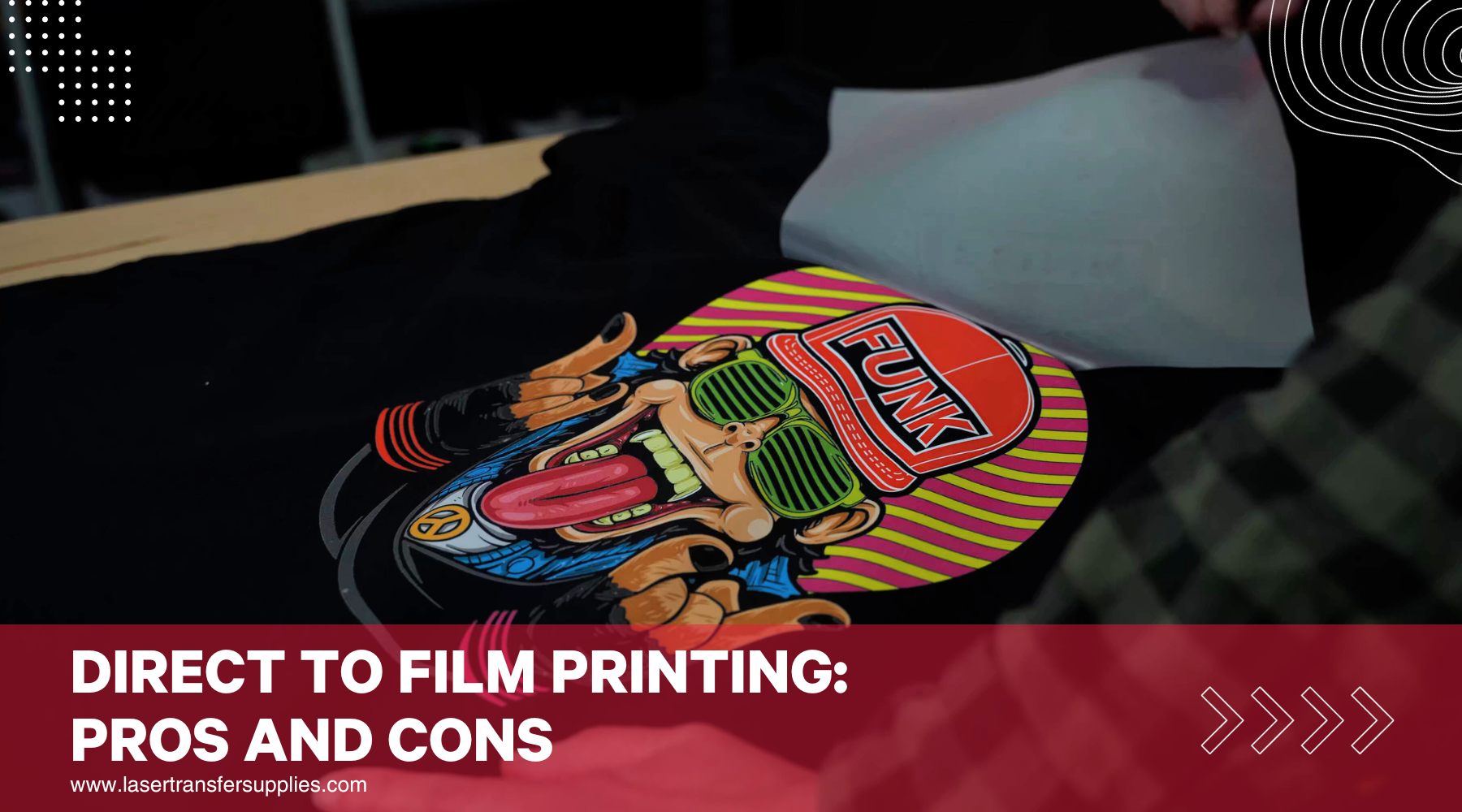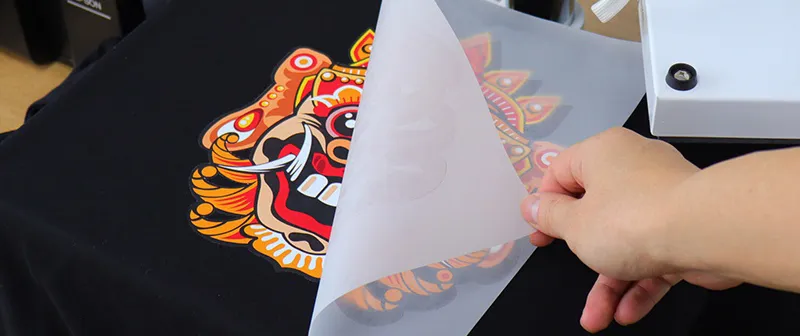A Deep Dive into DTF Printing: Strategies, Benefits, and Sector Applications
A Deep Dive into DTF Printing: Strategies, Benefits, and Sector Applications
Blog Article
From Concept to Development: Letting Loose Creativity With DTF Printing on Numerous Fabrics
Starting an imaginative journey frequently entails the delicate equilibrium in between conceiving ideas and bringing them to life in concrete kinds. In today's vibrant realm of textile style, the use of Direct to Film (DTF) printing modern technology has actually revolutionized the procedure of transferring elaborate layouts onto different textiles - DTF Printing. From the first inception of a design idea to the last creation on material, the trip is loaded with possibilities waiting to be checked out. The blend of innovation and creativity with DTF printing opens doors to a realm where creative imagination recognizes no bounds.
Discovering the Perks of DTF Printing
Why is DTF printing progressively chosen over other approaches for its versatility and durability in the textiles industry? Direct-to-film (DTF) printing has been gaining traction in the textiles sector due to its many advantages that satisfy the evolving requirements of the marketplace. One key advantage of DTF printing is its flexibility in terms of the materials it can be used to. Unlike some typical methods that are restricted to certain textile types, DTF printing can be utilized on a variety of products, including cotton, polyester, blends, and even natural leather. This flexibility permits higher creative thinking and technology in textile design.
Moreover, DTF printing supplies outstanding durability, making it perfect for generating long-lasting styles on materials - DTF Printing. The prints developed via DTF are understood for their dynamic colors and resistance to fading, splitting, or peeling - ensuring that the end product maintains its high quality even after several washes or extended usage. This toughness makes DTF printing an economical option for suppliers looking to create top quality, enduring designs on fabrics
Designing With DTF: Advice
Designing successfully with DTF printing involves understanding the intricacies of electronic design software program and comprehending just how to optimize layouts for the ideal outcomes on various materials. When producing styles for DTF printing, it is critical to consider the material type, appearance, and shade to guarantee that the end product meets expectations. Right here are some methods and tips to improve your DTF layout process:
Resolution is Key: Begin with high-resolution images to keep clarity and intensity in your layouts. Low-resolution images can cause a pixelated end product.

Shade Matching: Focus on shade accuracy when designing for DTF printing. Use shade administration devices to make certain that the colors in your style translate precisely onto the material.
Vector Graphics: Utilize vector graphics any place possible to maintain the quality of your styles when scaling them to different sizes. (DTF Printing)
Examination Prints: Constantly perform test prints on sample fabrics to inspect the colors, resolution, and overall design high quality prior to full-scale manufacturing.
Selecting the Right Fabrics for DTF
When considering the optimum fabrics for DTF printing, the option of product plays an important role in attaining the desired top quality and longevity of the last published designs. Choosing the best textile is essential for making certain that the shades stick well, the layout stays vivid and sharp, and the general appearance satisfies assumptions. Fabrics with a high polyester web content are typically chosen for DTF printing as a result of their ability to hold the ink well and produce vivid prints. Polyester blends can likewise work efficiently, using a balance between resilience and print top quality. In addition, fabrics with a smooth texture often tend to yield much better outcomes as they offer a consistent surface area for printing, permitting for accurate outlining and color precision. It is necessary to consider the intended use of the published material when selecting the product, as various materials find out here now provide varying degrees of washability, stretch, and breathability. By carefully choosing the appropriate textile for DTF printing, creators can improve the long life and aesthetic effect of their styles.
Step-by-Step DTF Printing Refine

After healing, the printed style is then transferred onto the material using a warm press. As soon as the transfer is full, the fabric is enabled to cool down before the transfer movie is peeled off, leaving behind the vivid and resilient style on the material.

Showcasing DTF Masterpieces
Have you ever before wondered at the complex information and lively shades of DTF work of arts showcased on various fabrics? DTF printing has changed the way designs are transferred onto textiles, enabling unparalleled precision and splendor in colors. When these DTF masterpieces are put on screen, they astound target markets with their striking visuals and meticulous workmanship.
Among one of the most captivating facets of showcasing DTF work of arts is the flexibility it offers. Whether it's a vibrant and appealing site web layout on a tee shirt, a comprehensive pattern on a pillow case, or a custom-made print on a canvas bag, DTF printing allows for countless possibilities. This convenience enables musicians and developers to release their imagination and bring their visions to life on a large range of fabrics.
In addition, the toughness of DTF prints guarantees that these work of arts can hold up against the test of time without shedding their vibrancy. Whether shown in galleries, put on as fashionable garments, or used as attractive accents in homes, DTF work of arts remain to thrill viewers with their remarkable quality and aesthetic allure.
Conclusion
To conclude, DTF printing offers a versatile and ingenious approach for unleashing imagination on various textiles. By checking out the benefits of DTF printing, creating with particular tips and techniques, picking proper materials, and adhering to a detailed printing procedure, musicians can display their masterpieces effortlessly. This process enables the seamless shift from concept to creation, providing limitless possibilities for imaginative expression.
In today's dynamic realm of fabric layout, the use of Direct to Movie (DTF) printing innovation has revolutionized the procedure of transferring complex styles onto numerous textiles.Creating efficiently with DTF printing entails mastering the details of electronic style software application and comprehending how to enhance styles for the best results on different fabrics.When thinking about the optimal textiles for DTF printing, the selection check out here of material plays a crucial duty in achieving the desired top quality and toughness of the last published styles. The next step is publishing the layout onto a special DTF transfer movie using a DTF printer with the suitable ink. By exploring the benefits of DTF printing, creating with particular pointers and techniques, picking appropriate fabrics, and following a detailed printing procedure, musicians can display their work of arts with convenience.
Report this page